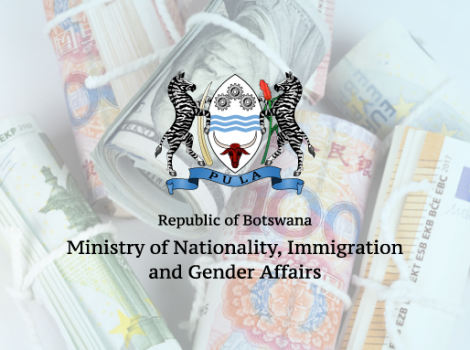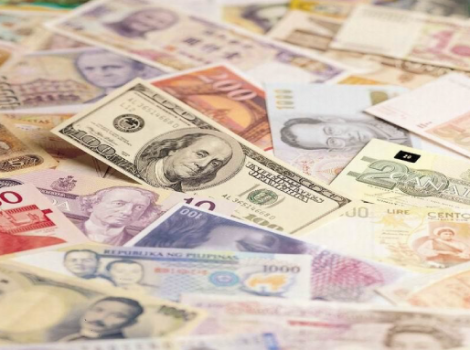Climate
Botswana’s climate is semi-arid. It is hot and dry for most of the year. The rainy season falls over the summer months, although rainfall tends to be erratic, unpredictable and regional. The type of rain that falls over Botswana is mainly heavy downpours, accompanied by loud thunderclap and intense flashes of lightening. Perhaps a sign of climate change, in recent years Botswana rains often come with heavy gusts of wind. Rarely does is rain for days on end; it chucks it down fast and heavy and then stops.
Another interesting characteristic of Botswana rain is that it’s very common for one area to receive a heavy down pour, while an area say 10 kilometres away receives none whatsoever!
Once it stops raining, the sun usually bears down with a vengeance. Any water that fell often dries up with a few hours, leaving no sign of there ever having been heavy rain.
Seasons
The summer season runs from November to March. It usually brings very high temperatures. However, summer is also the rainy season, and cloud cover and rain can cool the intense heat down considerably, although only usually for a short period of time, after which the sun usually comes back out with a vengeance.
The winter season runs from May to August. This being the dry season, there’s virtually no rain, with the winter period accounting for less than 10 percent of the annual rainfall. Winter days are invariably sunny and cool to warm; however, temperatures can drop below freezing in some areas, especially in the South West in the evenings, night and wee hours.
The months April, early May, September and October tend to be dry with cooler days than in the summer, while the nights are warmer than in winter. The mercury can drop to the point of frost on particularly cold days. A lot of people who’ve never been to Botswana before are often taken aback by just how cold it can get. Places like the Kgalagadi district, which covers a vast area of the Kalahari Desert and Lobatse (South-Eastern Botswana-because of its hilly landscape) are known to get bitterly cold.
Rainfall
The rainy season is in the summer, with January and February generally regarded as the peak rainfall months. The rain is heavier and more frequent in Northern parts of Botswana.
Temperatures
Summer days are intensely hot, especially in the weeks before the rains. This translates into very sticky and uncomfortably warm nights that can lead to a very unsettled night’s sleep. This can be made worse by pesky mosquitoes, which used to be restricted mainly to Northern Botswana but now seem to have realised there’s more food to be had in the Southern part of the country. During this time, it’s always best to stock up on mosquito repellent wristbands, plug-ins, citronella candles, sprays or creams; all of which are available at any good pharmacies, nature stores and supermarkets. We use a combination of these and find they work like magic at keeping mosquitoes at bay.
The temperatures in the shade can soar to a scorching 38°C or higher. General temperatures can soar right up to a blistering 44°C. The higher up North you go, the hotter it tends to get.
Winters are usually characterised by clear-skies and bone-dry weather. The air is seductively warm during the daylight hours but because there is no cloud cover, it gets bitterly cold at night and in the early mornings. Frost is common and small quantities of water can freeze.
Humidity
The level of humidity in summer ranges between 60-80% in the morning and drops to 30- 40% in the afternoon. It drops considerably in the winter and can range from 40-70% during the morning, and falls to between 20 – 30% in the afternoon.
For tourists, the best months to visit Botswana are from April through to October – in terms of both weather and game viewing. It is during this period that the wild animals gather around what water there is – the natural waterholes and the borehole-fed dams. This is when they are easy to spot.
Botswana is a semi arid country
Botswana is landlocked and has a subtropical desert climate characterized by great differences in day and night temperatures, virtually no rainfall and overall low humidity.
Dry season – May to October – Winter
There is little to no rain during the entire winter and humidity is low; typically 20-40%. Animals will concentrate around waterholes and rivers when other water resources dry up.
May – Relatively cool temperatures; typically 10°C (50°F) in the morning and 28°C (80°F) in the afternoon.
June – August – Be sure to pack winter clothing because morning game drives in open vehicles will be bitterly cold. The average morning temperature is 6°C (42°F). At night temperatures can drop below freezing, especially in the dryer Kalahari areas. Afternoons are more pleasant with temperatures around 25°C (78°F).
September – October – The heat gradually builds up and it can get very hot in October. Temperatures of up to 38°C (100°F) are commonplace, but the average temperature remains around 34°C (93°F) during the day.
Wet season – November to April – Summer
November – December – Clouds bring cooler temperatures and the occasional shower. This pattern of change continues in December, with typical temperatures between 20°C (69°F) in the morning and 33°C (91°F) in the afternoon. The more extreme Kalahari areas can still have very hot days, and cold mornings. Humidity is typically between 50-60%.
January – February – The wettest months, characterized by torrential downpours and sometimes intermittent rainfall that lasts days. Daytime temperatures are around 32°C (90°F) and the humidity between 50-80%.
March – April – Rainfall decreases and it steadily cools down as we head towards winter. This trend continues through April, during which time the weather’s clear with barely a cloud in the sky. The nights tend to be cooler and the days are temperate at around 30°C (87°F).
Reference: http://www.botswanatourism.co.bw



